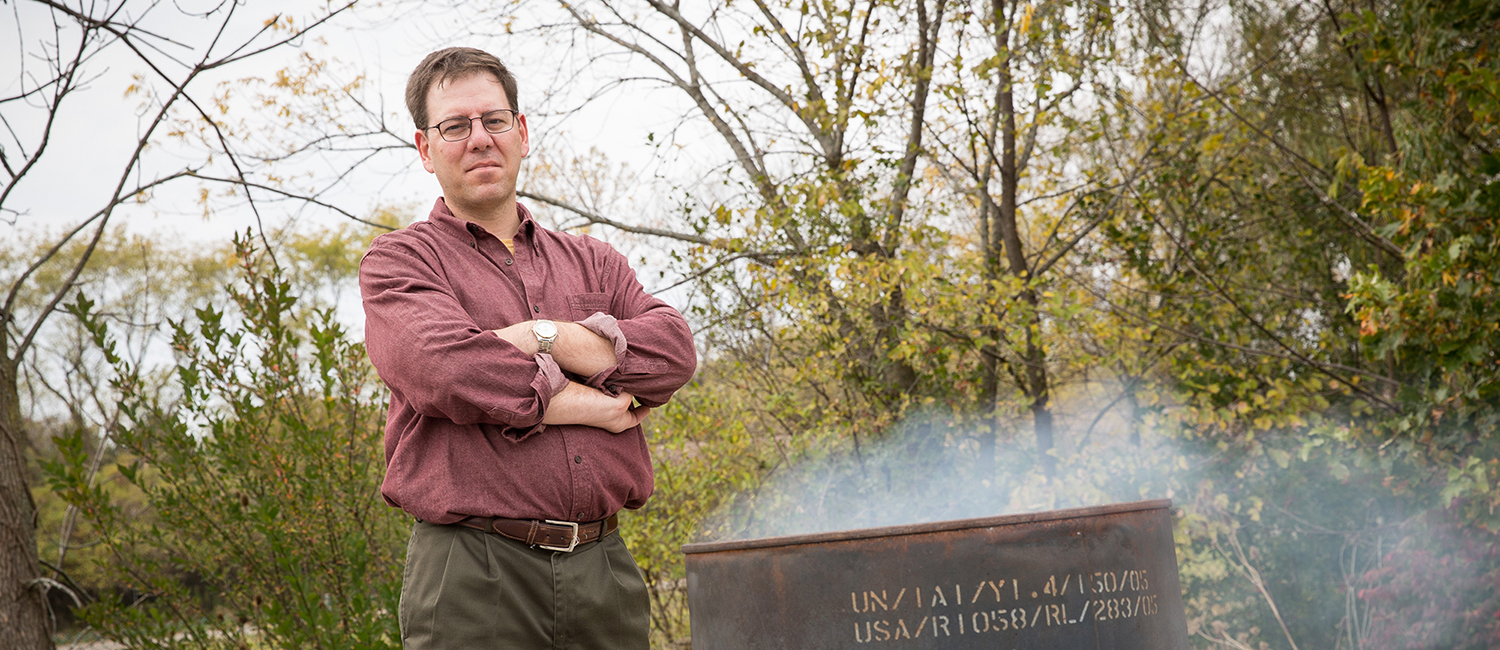
Legacy pollutants linked to lifelong health issues
As an Eagle Scout in the 1980s, Michael Laiosa took canoe trips down the Hudson River, once paddling from his hometown of Albany, New York, to the outskirts of New York City. He saw both spectacular scenery and signs of toxic environmental degradation. Riverfront signs warned against eating river fish or swimming in the water due to pollutants known as polychlorinated biphenyls (PCBs).
Millions of pounds of PCBs flowed into the river over decades, prompting a fishing ban before the industrial chemicals were ultimately outlawed in 1979.
The trips helped shape Laiosa’s career. Today, as an associate professor of environmental health sciences in the Joseph J. Zilber School of Public Health, he studies the effects of a related class of pollutants – dioxins – on fetuses. He found that the pollutants could cause immune system changes in fetal mammals exposed to them and lead to weakened immunity for a lifetime.
Those immune deficiencies, in turn, could trigger “anything from increased allergy and asthma as a toddler to increased susceptibility to cancer later in life,” Laiosa said. His research could affect parents’ decisions during pregnancy and how we manage sources of pollution.
A long-lasting pollutant
Dioxin is a “legacy pollutant,” meaning that the chemical lingers in the environment long after it is produced. One of the most famous sources of dioxin is Agent Orange, which was used extensively during the Vietnam War.
Although the Environmental Protection Agency and other bodies now regulate dioxin production closely, it’s still released in an unregulated manner when plastics are burned, Laiosa said. For example, discarded electronics are often shipped from the United States to developing countries for recycling. There, the usable metals are removed and resold, and the remaining plastics are burned, releasing dioxin that can harm local residents and migrate around the globe.
It happens here, too.
“One small but not insignificant source of dioxin is backyard burn barrels, often used in rural parts of Wisconsin,” Laiosa said.
Dioxin is released if the trash contains plastics, and virtually all of the chemical remains in the environment.
Highly mobile, it travels from the atmosphere to the ground in rain and snow. There, it is ingested by animals such as cows and pigs. Humans absorb dioxin by eating dairy, beef and pork. Almost all Americans are exposed to dioxin, usually at really tiny levels. But the chemical accumulates in our fat cells, where it can stay for years.
What dioxin does
In his lab in the Kenwood Interdisciplinary Research Complex, Laiosa studies how exposing pregnant mice to dioxin affects their babies’ development.
His research — originally funded by a five-year grant from the National Institute of Environmental Health Sciences — shows that dioxin alters the hematopoietic stem cells, or blood-forming cells, in fetal mice.
When blood-forming stem cells divide in two, one cell serves as a copy of the original stem cell, and the other cell matures into red or white blood cells and immune cells. This dual process of stem-cell renewal and maturation continues throughout one’s entire life. But it is also highly sensitive to environmental factors that can lead to imbalances in the production of mature blood cells compared to replacement stem cells.
In an article published in the journal Environmental Health Perspectives, Laiosa reported that exposing fetuses to dioxin in the womb increases cell stress, fundamentally altering this balance of blood-forming cells.
“This yields cells that are less able to renew themselves, potentially reducing the number of mature blood cells produced,” he explained.
Laiosa also found that dioxin in fetal tissue binds to a protein known as an aryl hydrocarbon receptor (AHR), which regulates blood formation. When dioxin and AHR interact, blood-forming cells lose their ability to copy themselves over time. Previous studies by other scientists showed that dioxin and AHR interact similarly in adult mice, but “in the fetus, we observed some of these changes at a much lower dose of dioxin than in adult mice,” Laiosa said.
When he transplanted a mix of healthy stem cells and dioxin-exposed stem cells into mice, the healthy cells renewed themselves much faster than the dioxin-exposed cells, at a pace of roughly 3-to-1. “If blood-forming stem cells start out diminished, they don’t recover,” Laiosa said. “They stay the same or get even worse over time.”
Implications for people
Previous research showed that changes in the blood-forming cells trigger immune deficiencies in mice that last their entire lives. Studies show links to chronic conditions: The mice are more likely to wheeze when exposed to potential allergens, for example, and are more vulnerable to colds and flu. “The likelihood of a similar biological effect in humans is extraordinarily high,” Laiosa said.
His findings about dioxin and AHR could lead to new drugs. “If we better understand how this protein works on blood system formation, perhaps there are compounds that could be developed that could improve blood system formation for patients that need it,” he said. That could include bone marrow transplant recipients.
Laiosa acknowledged that his findings might create anxiety for expectant parents. Given the early stage of such research, it’s often unclear what parents can do to reduce dioxin exposure and protect their babies. “It was in the back of our minds when my wife and I were expecting both of our children,” Laiosa admitted. “We did what everyone tries to do, which was to have the easiest pregnancy possible and to make the best choices we could for our family.”
Eventually, he said, research done in his lab and others may provide clarity about how chemical exposures affect babies and “inform decision-making about waste streams,” such as how to deal with discarded electronics.
“One of the beauties of basic science,” he said, “is that knowledge can accumulate and coalesce over time into something that leads to improved prevention and treatment strategies for human health.”
___
Read the full 2016 UW-Milwaukee Research Report.